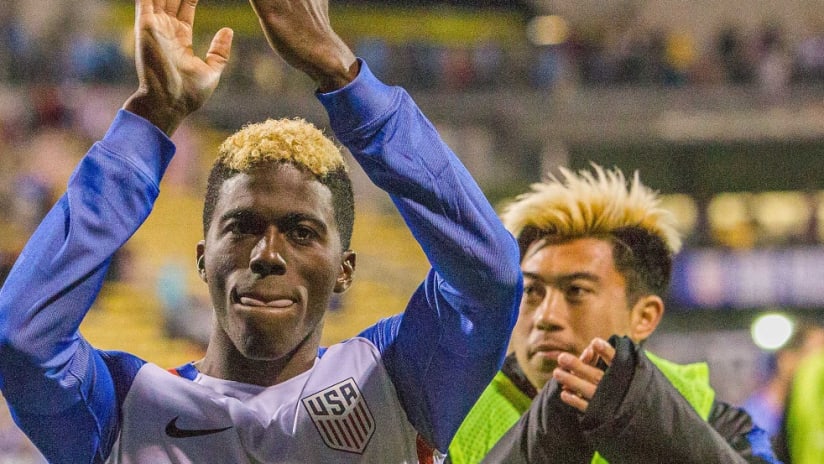You probably saw the video and the inevitable piling on via social media. If you didn’t see “Zardes First Touch Compilation” before it got pulled down by YouTube for a copyright violation, you missed two minutes and change of thumping techno and cringe-worthy first touches by Gyasi Zardes against Colombia and Costa Rica.
It’s the sort of thing that spreads like wildfire in US soccer circles. See, everyone said, this guy shouldn’t be on the field for the US men's national team. His international pedigree – hell, his worth as a soccer player – is invalidated by this lowlight reel. He’s bad, and his first touch proves it.
Before I get to my point, let me be clear: Many of the touches in the video were shockingly bad. They snuffed out promising build-up play, erased potential scoring opportunities and put the US under pressure. Zardes’s first touch is the weakest part of his game, and that’s hard to un-see.
But when I see tweets harping on that, I start to wonder who is actually watching games critically and who is content to bask in the warm glow of confirmation bias.
Call me a homer. Call me a stooge. Call me an idiot. Call me whatever you want. Just stop reducing Zardes and his contribution to the US to one aspect of his overall skillset. It’s shallow. It’s myopic. It lacks nuance.
It tells me you might not understand the scope of what Zardes is being asked to do by Jurgen Klinsmann, who by all accounts seems very happy with his play. It tells me that you don’t recognize the massive role Zardes will play if the US manage to knock off Ecuador Thursday night (9:30 pm ET, FS1, UniMás, UDN) to make the Copa América Centenario semifinals.
Where are the videos featuring 90 minutes of purposeful running and defensive pressure? Where are the videos of clearances, tackles and recoveries in his own half? Where are the folks deducing that a forward at club level is often playing as a Frankie Hejduk-style wingback against world-class competition – and doing a pretty damn good job?
Frankie didn’t have a great first touch either, by the way. But he won. So far, the same is true of Zardes. Problem is, you can’t boil that down into a couple minutes of beats and hot takes in the comment section.
It’s easy to rag on his touch – and often fair, to be honest, since a poor first touch lowers the ceiling on what he can accomplish individually and within the scope of a team concept – but there’s a reason Klinsmann has played Zardes more than anyone but Michael Bradley over the past two years. He’s not always a pretty player, but he’s generally a productive, team-first player.
If you took Twitter’s word for it after Zardes’ assist to Clint Dempsey sealed the deal against Paraguay, even a blind squirrel finds a nut every once in awhile. Yes, he could have put the game away when Bobby Wood put him through on goal, only to dilly-dally on the ball, but he also could have balked at the unheralded defensive duties that often required him to drop deeper than Jermaine Jones and Fabian Johnson.
Like Frankie, he chewed up ground and did it with a smile. And like Frankie’s teams, the current US squad need exactly that.
Zardes may biff a chance or two tonight. He’ll almost certainly shank a few touches and give us a few more GIFs to agonize over. But he’ll also stand toe to toe against Ecuador’s powerful wingers, Antonio Valencia and Jefferson Montero. He’ll challenge for every ball. He’ll make the right runs. He may even score or set up the goal that sends the US through.
Maybe the problem is that we want Zardes to be the complete package. We want his touch to be silky smooth, his runs instinctive, his finishes decisive and precise. We want him to be the American Carlos Bacca, Daniel Sturridge or Didier Drogba.
He’s not those players. He’s Gyasi Zardes. He’s tireless. He’s effective. He’s underappreciated. And should the US take down Ecuador, he’ll be a big reason why the US will head to the semifinals believing they can make history.













